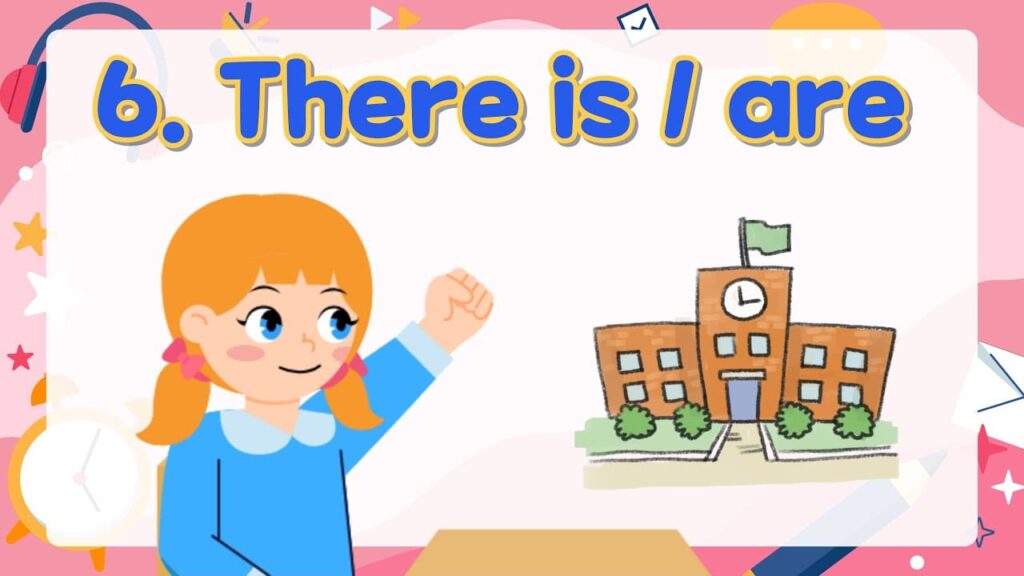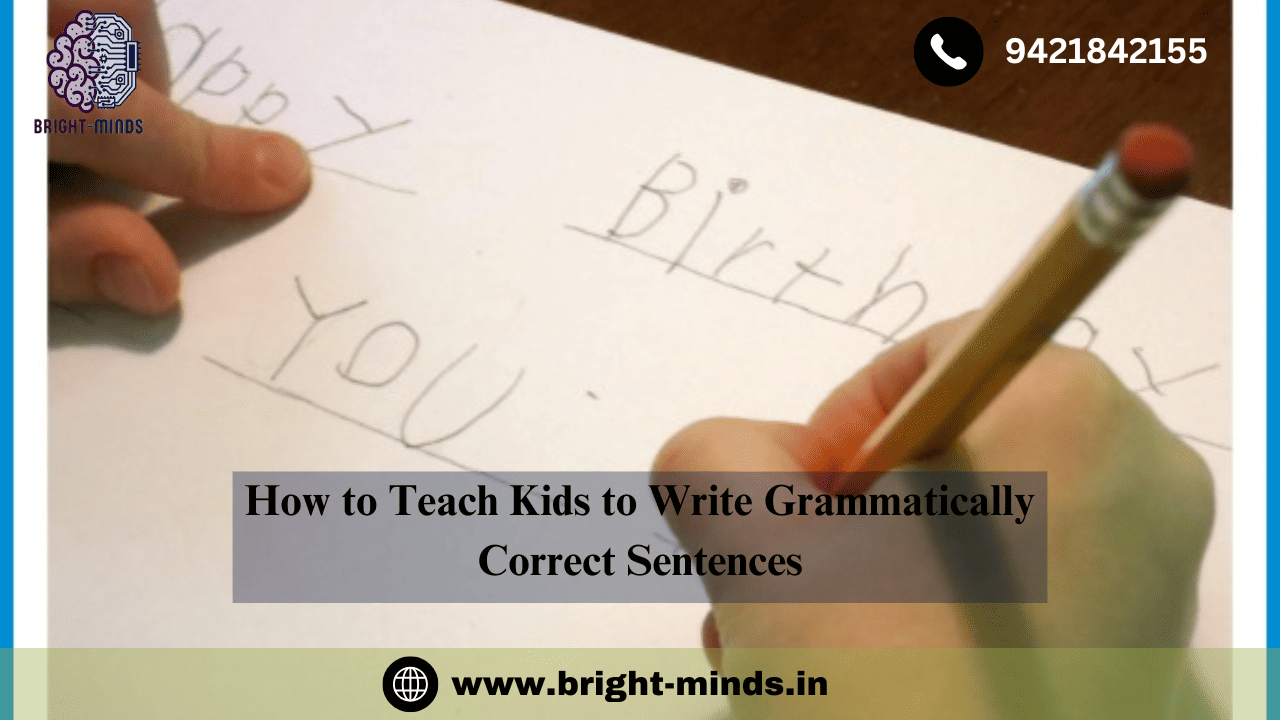Introduction
Teaching kids to write grammatically correct sentences is a foundational step in developing strong communication skills. It’s not just about following rules; it’s about empowering children to express themselves clearly and effectively. This blog explores practical strategies, fun activities, and essential tips to help kids master sentence structure and grammar.
Why is Grammar Important for Kids?

Grammar forms the backbone of effective communication. When kids learn proper grammar, they develop:
- Clarity in Expression – They can convey thoughts accurately.
- Confidence in Writing – They feel more assured when writing essays, stories, or reports.
- Improved Reading Skills – Understanding sentence structures helps them read more effectively.
Step-by-Step Guide to Teaching Grammar
1. Start with the Basics
Begin with the essential elements of a sentence: subject, verb, and object. Ensure kids understand how these parts work together to form a meaningful sentence.
Activity:
- Use color-coded flashcards for subjects, verbs, and objects. Let kids arrange them to form sentences.
Example: - Subject: The dog
- Verb: chased
- Object: the ball
- Sentence: The dog chased the ball.
2. Teach Sentence Types
Introduce kids to different sentence types:
- Declarative: Statements (The sky is blue.)
- Interrogative: Questions (Is the sky blue?)
- Imperative: Commands (Close the door.)
- Exclamatory: Excitement (What a beautiful day!)
Activity:
- Ask kids to convert one type of sentence into another.
3. Introduce Parts of Speech
Help kids understand nouns, verbs, adjectives, adverbs, and more. Highlight their roles in sentence construction.
Game Idea:
- Play “Word Hunt.” Give kids a paragraph and ask them to identify different parts of speech. Reward correct answers with points.
4. Focus on Punctuation
Teach kids the importance of punctuation marks like periods, commas, question marks, and exclamation points.
Activity:
- Provide unpunctuated sentences and ask kids to fix them.
Example: - Unpunctuated: what a beautiful day it is
- Corrected: What a beautiful day it is!
5. Practice Sentence Expansion
Encourage kids to expand simple sentences by adding descriptive words or phrases.
Example:
- Simple: The cat sleeps.
- Expanded: The fluffy cat sleeps peacefully on the couch.
Activity:
- Play “Add a Word.” Each student adds one word to a simple sentence to make it more detailed.
6. Teach Subject-Verb Agreement
Simplify this concept by demonstrating how singular and plural subjects pair with corresponding verbs.
Example:
- Singular: The boy runs.
- Plural: The boys run.
Activity:
- Provide mismatched sentences and ask kids to correct them.
Using Fun Activities to Teach Grammar
1. Grammar Games
Games like Mad Libs or Sentence Scramble make learning grammar enjoyable.
How to Play Sentence Scramble:
- Write words on separate cards. Kids must arrange the cards to form a correct sentence.
2. Storytelling with Rules
Encourage kids to write short stories using specific grammar rules, such as including at least three adjectives or two adverbs.
3. Songs and Rhymes
Songs about grammar rules help younger kids remember concepts more easily.
Example:
- Create a song about subject-verb agreement or punctuation marks.
Using Technology for Grammar Learning
Introduce educational apps and websites to make grammar interactive. Some popular options include:
- Grammarly for Kids – Provides sentence suggestions.
- Khan Academy Kids – Interactive lessons on grammar basics.
- FunBrain – Grammar-based games and quizzes.
Common Challenges and How to Overcome Them
1. Lack of Interest
Kids might find grammar dull. Overcome this by introducing games and creative activities.
2. Overwhelmed by Rules
Introduce one rule at a time. Reinforce each rule through practice before moving on.
3. Fear of Making Mistakes
Encourage a positive learning environment where mistakes are seen as learning opportunities.
Tips for Parents and Teachers
- Model Correct Grammar: Speak and write using proper grammar as an example for kids.
- Encourage Reading: Reading exposes kids to proper sentence structures.
- Provide Feedback: Offer constructive feedback on their writing. Highlight strengths and areas for improvement.
The Role of Practice in Mastery
Consistent practice is key to mastering grammar. Provide worksheets, daily writing prompts, and peer review activities to build confidence and skills.
Example Prompt:
- Write a sentence about your favorite animal, including at least one adjective and one adverb.
Conclusion
Teaching kids to write grammatically correct sentences is a journey that combines patience, creativity, and practice. By breaking down concepts, incorporating fun activities, and providing consistent support, you can help kids build strong grammar skills that last a lifetime. Start today and watch their confidence and abilities grow!
Also Read:
https://bright-minds.in/unlocking-word-meaning-for-class-ukg-english-to-hindi/

